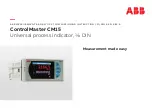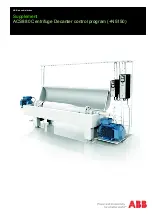Chapter 36 Nexus Development Interface (NDI)
MPC5602P Microcontroller Reference Manual, Rev. 4
Freescale Semiconductor
873
36.9
Debug support overview
Internal debug support in the e200z0h core allows for software and hardware debug by providing debug
functions, such as instruction and data breakpoints and program trace modes. For software based
debugging, debug facilities consisting of a set of software accessible debug registers and interrupt
mechanisms are provided. These facilities are also available to a hardware based debugger which
communicates using a modified IEEE 1149.1 Test Access Port (TAP) controller and pin interface. When
hardware debug is enabled, the debug facilities controlled by hardware are protected from software
modification.
Software debug facilities are built on Power Architecture technology. e200z0h supports a subset of these
defined facilities. In addition to the facilities built on Power Architecture technology, e200z0h provides
additional flexibility and functionality in the form of linked instruction and data breakpoints, and
sequential debug event detection. These features are also available to a hardware-based debugger.
The e200z0h core provides support for a Nexus real-time debug module. Real-time debugging in an
e200z0h-based system is supported by a Nexus class 2, 3, or 4 module.
36.9.1
Software Debug Facilities
e200z0h provides debug facilities to enable hardware and software debug functions, such as instruction
and data breakpoints and program single stepping. The debug facilities consist of a set of debug control
registers (DBCR0–2, DBCR4, DBERC0), a set of address compare registers (IAC1, IAC2, IAC3, IAC4,
DAC1, and DAC2), a set of data value compare registers (DVC1, DVC2), a Debug Status Register
(DBSR) for enabling and recording various kinds of debug events, and a special Debug interrupt type built
into the interrupt mechanism. The debug facilities also provide a mechanism for software-controlled
processor reset in a debug environment.
Software debug facilities are enabled by setting the internal debug mode bit in Debug Control register 0
(DBCR0
IDM
). When internal debug mode is enabled, debug events can occur, and can be enabled to record
exceptions in the Debug Status register (DBSR). If enabled by MSR
DE
, these recorded exceptions cause
Debug interrupts to occur. When DBCR0
IDM
is cleared, (and DBCR0
EDM
is cleared as well), no debug
events occur, and no status flags are set in DBSR unless already set. In addition, when DBCR0
IDM
is
cleared (or is overridden by DBCR0
EDM
being set and DBERC0 indicating no resource is “owned” by
software) no Debug interrupts will occur, regardless of the contents of DBSR. A software Debug interrupt
handler may access all system resources and perform necessary functions appropriate for system debug.
36.9.1.1
Power Architecture technology compatibility
The e200z0h core implements a subset of the Power Architecture solutions internal debug features. The
following restrictions on functionality are present:
•
Instruction address compares do not support compare on physical (real) addresses.
•
Data address compares do not support compare on physical (real) addresses.


















